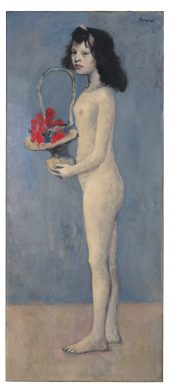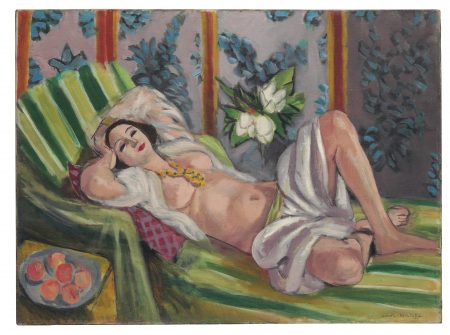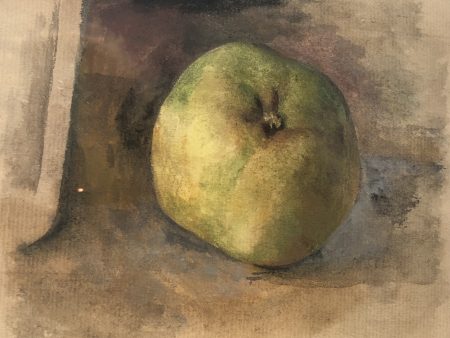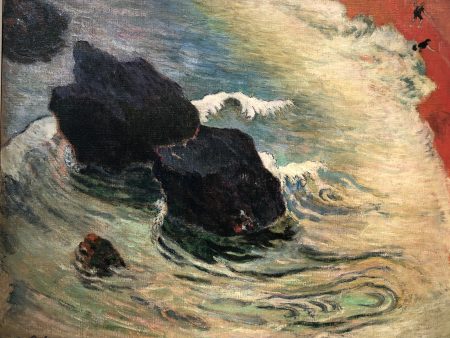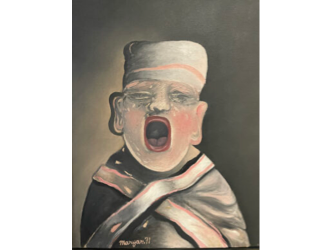The use of superlatives is all too common (the most beautiful artwork, the most beautiful collection etc…) and the sole objective is to push up prices.
An example that comes to mind is the sale in 2015 and 2016 of what was presented as an exceptional collection belonging to the businessman and former owner of Sotheby’s, Alfred Taubman, who – it turns out – had not exclusively accumulated masterpieces (the sale made 473.5 millions dollars).
So when Christie’s announced the auction of the collection of David and Peggy Rockefeller, with whispers of it being the biggest sale ever staged or the sale of the century, as the sale of the collections of Yves Saint Laurent and Pierre Bergé (which raised 373.5 million euros) had already been dubbed in 2009, the first reaction to emerge was that of caution.
But after looking at it more closely and speaking to people who knew David Rockefeller (he died at the age of 101 in 2017), this is without doubt set to be an exceptional sale to honour the memory of an exceptional man.
As the American Vanity Fair from last summer observed: “While the grandfather’s name became synonymous with capitalism, the grandson’s became synonymous with giving back.”
Rockefeller was at the head of Chase Manhattan Bank for many years, but his philanthropic activities took up a great deal of his time and always did; according to Vanity Fair he donated one billion dollars to charities during his lifetime.
This figure will soon be substantially greater since, in accordance with his final wishes, all his real and personal property are to be sold with the proceeds going once again to charitable organizations. The works of art in the collection alone are estimated at 500 million dollars, a value that ought to be surpassed with ease.
David Rockefeller married Peggy in 1940. They had six children and she died in 1996.
They began collecting impressionist and modern art, mainly French, from 1948 onwards, with the encouragement of Alfred Barr, the director of Moma at the time, who didn’t hesitate to bid at auction on his behalf.
David’s mother, Abby, co-founded Moma in 1929.
His father, John, financed – among other things – the Cloisters as part of the Metropolitan Museum, and his brother John founded the Asian Society. I
n the United States this family, whose fortune was made from oil, is considered to be the height of aristocracy. This exceptional pedigree will certainly give a boost to the value of the 16 000 lots presented in 62 categories (including English and American furnishings, European porcelain, American popular art, Asian art, Pre-Colombian art) at the sale organized by Christie’s between 8 and 10 May and from 1 to 11 May online.
But better yet, for the impact at the level of the individual sales, David Rockefeller himself had, according to the director of Moma, Glenn Lowry, an exceptional eye for art: “He had a sharp eye for beautiful things, and a remarkable way of arranging them in his different houses to produce a certain harmony, without showing off.
Proof of this was given in 2007 when David Rockefeller sold a 1950 painting by Mark Rothko for 72.8 million dollars – an absolute record in its genre at the time. He had bought it in 1960 for around 10 000 dollars.
In 2018, the area that ought to bring in the highest prices is the impressionist and modern art sale on 8 May, featuring three pieces by Picasso, five by Monet, two by Matisse, three by Vuillard, two by Gauguin, two by Seurat and three by Bonnard, among others.
The New York-based art dealer David Nash, who has also worked at Sotheby’s for a long time, was one of the professionals regularly called upon by Rockefeller, who thus acquired a 1982 painting by Willem de Kooning from him, on sale the 9 May with an estimation of 6 million dollars. “Kirk Varnedoe, the director of paintings at Moma, advised him to come and see us. We were administering de Kooning’s estate at the time.
Incidentally, David Nash recalls the circumstances of the sale of the 1888 painting by Gauguin at Sotheby’s in 1966, which is to be presented on 8 May. “It belonged to a Californian collector and it was his son who brought the painting to the Sotheby’s offices in Los Angeles strapped to the back of his motorbike.”
Today, this bold composition in which the wave rushes aslant across the canvas, highlighted by a line of orange, is estimated at 12 million dollars.
In the same sale we find an exceptional reclining Odalisque painted by Matisse in 1923, with his decorative effects filling the canvas, estimated at 70 million dollars.
But the superstar painting of the Rockefeller collection is a Picasso made in the classic technique from 1905, depicting a young girl naked and holding a basket. The work was part of the estate of Alice Toklas, the companion of the legendary Picasso collector Gertrude Stein.
In 1968, six Moma’s trustees clubbed together to buy these artworks and then drew lots for them. David Rockefeller clearly had a good number. The Picasso painting is set to smash all estimations, which go up to 90 million dollars.
In 1994, David Rockefeller exhibited 21 of his modern art masterpieces at Moma over the summer. These included the young girl from Picasso’s Rose Period. And he gave several of them to the museum. But not the Young girl.
“I do regret that this painting wasn’t given to us,” Glenn Lowry confesses today.
In 2005, David Rockefeller made a donation to Moma of no less than 100 million dollars to help for the museum’s extension. Today, the institution is also on the list of beneficiaries of the sales at Christie’s.
Jonathan Rendell, Deputy Chairman of Christie’s and conductor of these sales on a gargantuan scale, explains the spirit in which they were organized.
But what he ultimately expects from this giant operation has to do with the impact it will have on some of the largest fortunes on the planet.
“How do you leave a mark when you are extremely rich? Today, the Rockefeller foundation is frequently visited by Chinese families who wish to understand his vision. The sale could also influence mindsets”, he concludes.
The son of David Rockefeller, David Rockefeller Jr., recently spoke to CNBC about the idea of all his father’s property being sold at auction.
Support independent news on art.
Your contribution : Make a monthly commitment to support JB Reports or a one off contribution as and when you feel like it. Choose the option that suits you best.
Need to cancel a recurring donation? Please go here.
The donation is considered to be a subscription for a fee set by the donor and for a duration also set by the donor.


